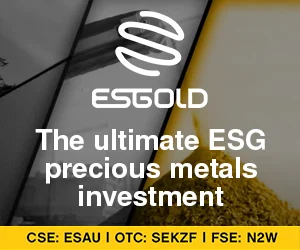The gold market in 2025 has evolved into a complex landscape, transcending traditional metrics like inflation and currency debasement. Instead, it serves as a barometer for geopolitical instability and corporate influence. With gold prices soaring past $3,500 per ounce—nearly doubling since 2023—this surge is not merely a reaction to economic conditions but a calculated interplay of various factors. Understanding these dynamics is crucial for investors navigating this evolving gold landscape.
Geopolitical Risk: The New Gold Catalyst
Gold has long been regarded as a safe-haven asset, but its role has been amplified by the Geopolitical Risk (GPR) Index, which has remained at historically high levels since 2023. According to J.P. Morgan Research, geopolitical factors accounted for 16% of gold’s performance over the past six months, with 4% directly linked to heightened global tensions. The U.S. dollar’s underperformance—recording its worst start to a year since 1973—has further fueled demand for gold, as both central banks and investors seek alternatives to dollar-denominated assets.
Central banks have emerged as significant players in this trend. By mid-2025, global gold reserves in official foreign exchange holdings had risen to 20%, up from 15% in 2023. Notable buyers include China, India, and Turkey, which collectively added over 900 tonnes of gold in 2025 alone. The People’s Bank of China, for instance, increased its holdings to 2,292 tonnes, while Poland’s National Bank added 49 tonnes in the first quarter of 2025. These purchases are strategic moves aimed at hedging against the erosion of the dollar’s purchasing power and mitigating the risks associated with financial weaponization, as evidenced by the 2022 sanctions on Russian reserves.
Corporate Political Connections: Shaping Sentiment and Demand
While central banks dominate headlines, corporate lobbying and policy advocacy have quietly reshaped the gold market. The World Gold Council has actively promoted gold’s role in global financial stability, particularly in the context of U.S. elections and potential Trump-era policies. Anticipated trade tariffs and economic reforms have been framed as catalysts for market volatility, positioning gold as a hedge against stagflation and currency devaluation.
Lobbying firms like DB3 (a merger of the Daschle Group and Baker Donelson) and the Public Policy Holding Company (PPHC) have expanded their influence, representing clients such as Toyota and General Dynamics. These firms advocate for policies that support gold’s role in central bank portfolios and private investment strategies. Additionally, corporate mergers in the K Street lobbying sector—such as PPHC’s acquisition of Pine Cove Capital—have created a more cohesive platform for shaping legislation and regulatory frameworks.
Corporate lobbying also extends to sustainability and ESG (Environmental, Social, and Governance) practices. A 2025 study of 42,587 firm-years across 37 countries found that companies with stronger ESG profiles adapted better to geopolitical shocks, while those with weaker scores faced heightened risks. This dual focus has led gold-producing firms to not only lobby for favorable policies but also emphasize ethical sourcing and responsible mining to align with central bank and investor expectations.
Investment Implications: A Structural Bull Case
For investors, the confluence of geopolitical risk and corporate influence presents a compelling case for gold. J.P. Morgan projects that gold prices will average $3,675 per ounce in Q4 2025 and could approach $4,000 by mid-2026, driven by sustained central bank demand and macroeconomic uncertainties. Gold ETFs, which hold 3,616 tonnes globally, offer a liquid and accessible way to capitalize on this trend.
However, the risks are not negligible. A peaceful resolution to trade tensions or a stabilization of the U.S. dollar could temper gold’s gains. Conversely, a deterioration in global stability—whether through renewed sanctions, trade wars, or currency crises—could push prices higher by 10–15%. Investors should also keep an eye on the role of dark money groups and political action committees (PACs), which may amplify or distort market sentiment through indirect advocacy.
Strategic Recommendations
Allocate to Gold ETFs: With global holdings nearing 2020 levels, ETFs like SPDR Gold Shares (GLD) and iShares Gold Trust (IAU) provide exposure to gold’s structural bull case.
Target Emerging Markets: Countries like Uzbekistan and Mali, where gold exports stabilize economies, offer high-growth potential amid geopolitical fragmentation.
Monitor Central Bank Activity: Tracking monthly reports from the World Gold Council and the IMF can provide insights into the pace of gold accumulation.
Diversify with Physical Gold: For long-term investors, physical gold remains a hedge against systemic risks, particularly in a de-dollarizing world.
Conclusion
The surge in gold prices in 2025 is not a fleeting trend but a structural shift driven by geopolitical realignments and corporate lobbying. As central banks continue to prioritize gold as a strategic reserve and investors seek safe-haven assets, the metal’s role in global finance is set to expand. For those who recognize this dynamic early, the rewards could be substantial. Understanding the interplay of geopolitical risks and corporate influences will be essential for navigating the complexities of the gold market in the years to come.




